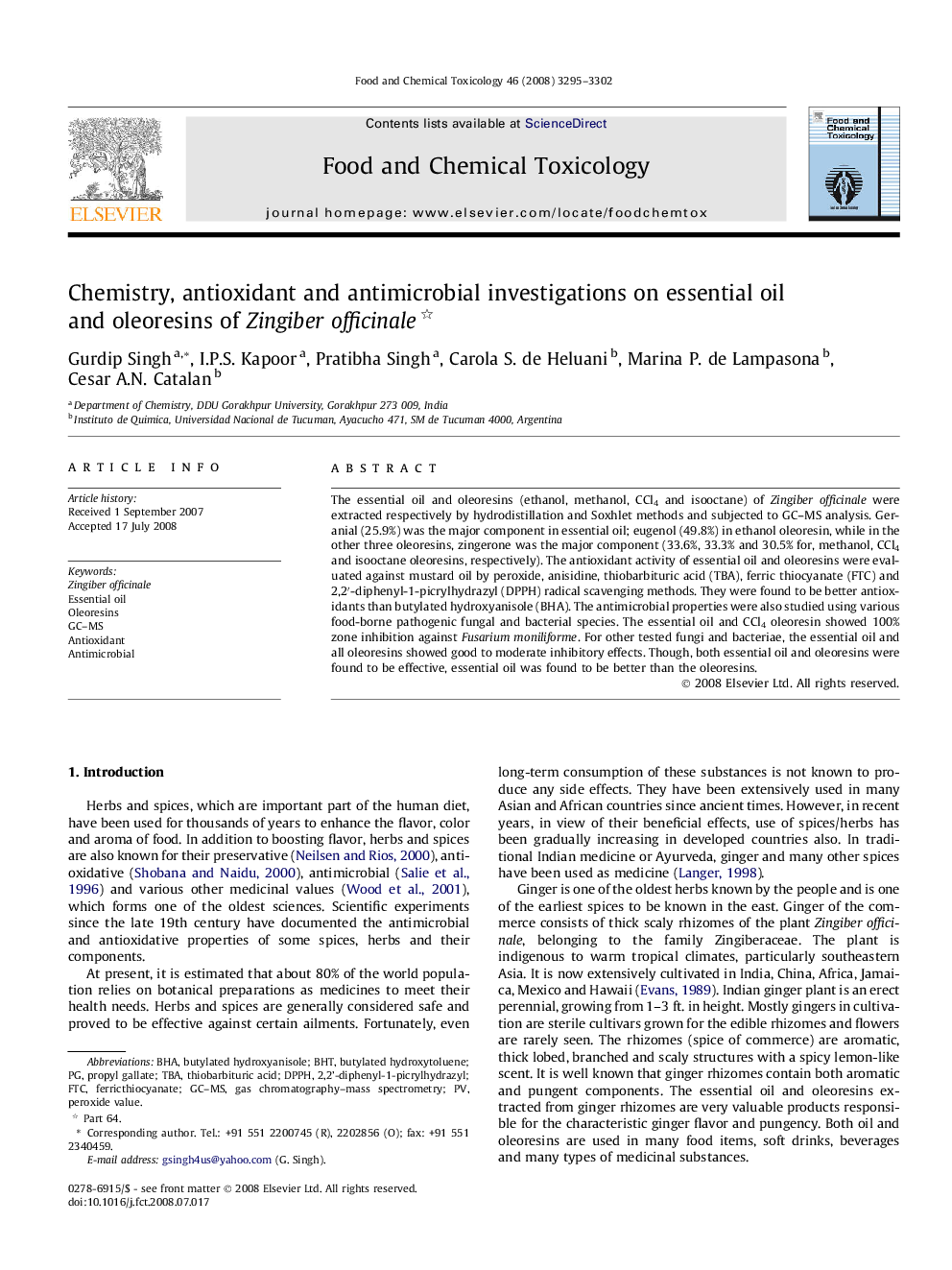| Article ID | Journal | Published Year | Pages | File Type |
|---|---|---|---|---|
| 2587244 | Food and Chemical Toxicology | 2008 | 8 Pages |
The essential oil and oleoresins (ethanol, methanol, CCl4 and isooctane) of Zingiber officinale were extracted respectively by hydrodistillation and Soxhlet methods and subjected to GC–MS analysis. Geranial (25.9%) was the major component in essential oil; eugenol (49.8%) in ethanol oleoresin, while in the other three oleoresins, zingerone was the major component (33.6%, 33.3% and 30.5% for, methanol, CCl4 and isooctane oleoresins, respectively). The antioxidant activity of essential oil and oleoresins were evaluated against mustard oil by peroxide, anisidine, thiobarbituric acid (TBA), ferric thiocyanate (FTC) and 2,2′-diphenyl-1-picrylhydrazyl (DPPH) radical scavenging methods. They were found to be better antioxidants than butylated hydroxyanisole (BHA). The antimicrobial properties were also studied using various food-borne pathogenic fungal and bacterial species. The essential oil and CCl4 oleoresin showed 100% zone inhibition against Fusarium moniliforme. For other tested fungi and bacteriae, the essential oil and all oleoresins showed good to moderate inhibitory effects. Though, both essential oil and oleoresins were found to be effective, essential oil was found to be better than the oleoresins.
